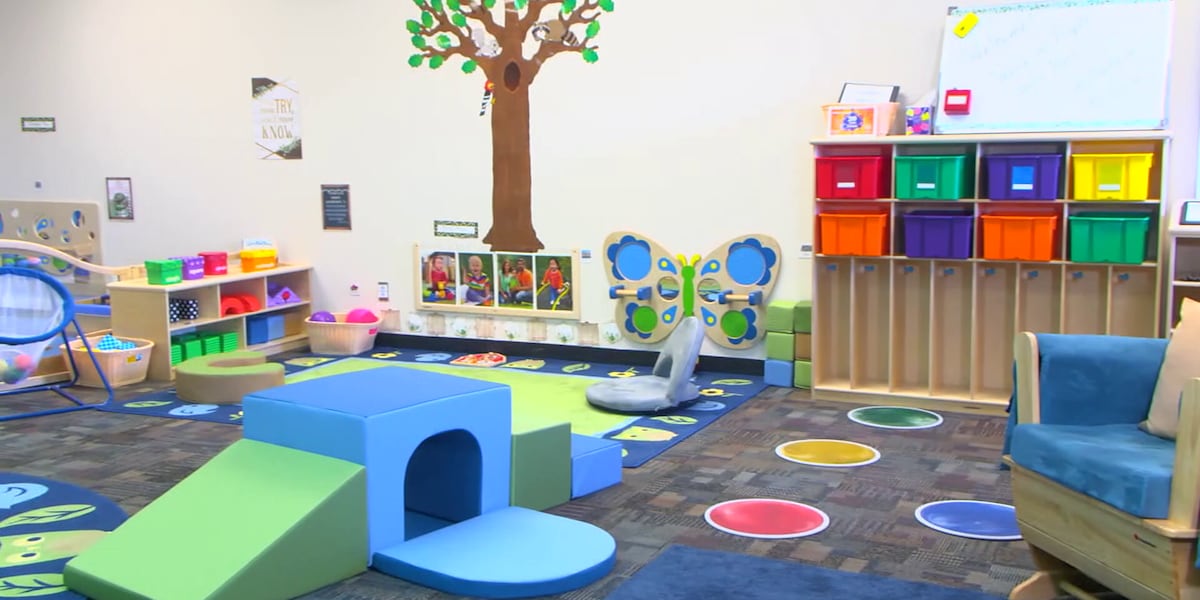Arizona
Arizona lawmakers may finally update state water law

By Howard Fischer
Capitol Media Services
PHOENIX — It’s taken four decades, Saudi cows munching on alfalfa grown with Arizona water and national headlines about whether Arizona is finally drying up.
But state lawmakers appear to finally be ready to update the 1980 Groundwater Act to plug the holes it left — even as Gov. Katie Hobbs considers a recommendation from her Water Policy Council to approve what could be a new exception.
And resolving some of the issues of requirements for adequate water supply could in turn help alleviate the state’s other pressing problem of affordable housing.
It all comes down to the requirement in that law that new homes built in “active management areas” have a 100-year assured water supply. The idea was to wean development away from groundwater.
Only thing is, state law designated just five of those: Prescott, Phoenix, Pinal, Tucson and Santa Cruz.
There is an option for area residents to create their own through a petition and election, as occurred in the Douglas area. But a similar election was defeated in the Willcox basin.
And there are whole areas of the state with no limits.
All that has become increasingly clear in recent years as corporate farms, made aware of the lack of any pumping limits, have bought or leased land in rural areas.
The most prominent example was Fondomonte which is a subsidy of the Saudi dairy company Almari which has been growing alfalfa on Arizona groundwater to feed cattle in the kingdom which, being a desert, does not allow such pumping.
But it also includes U.S. Farming Realty Trust which purchased about 20 square miles of land in La Paz County. That firm then leased some of the land to Al Dahra Farms, based in the United Arab Emirates which grows the hay that gets shipped to countries in the Middle East and Asia.
And that whole purchase was financed in part by a 2012 investment of $175 million by the Arizona State Retirement Fund.
Creating a statewide active management area does not appear to be feasible.
So what is being presented to lawmakers is a proposal that would allow local officials or even the state Department of Water Resources to form some sort of “rural groundwater management area” that would come up with a plan to deal with groundwater overdraft. At the very least it would mandate reporting and monitoring of existing pumping, something that is not now required.
The big opposition to that could come from the Arizona Farm Bureau. Stephanie Smallhouse, the organization’s president, said there is a concern that any plans to regulate agriculture would override the interests of farmers who have been there for generations.
What also is likely to force legislative attention was the announcement by the Department of Water Resources in May it won’t issue any permits for new subdivisions on the fringes of Phoenix. That came after a new analysis of the groundwater in the basin showed there simply won’t be enough to provide that legally required 100-year supply. And while that didn’t affect cities served by water companies with their own assured supply, it halted development in other areas around Buckeye and Queen Creek.
That move drew derision from Senate President Warren Petersen who said that 100-year number — a figure that goes back even before the 1980 law — was “arbitrary.” But the Gilbert Republican said he has no interest in trying to repeal it.
What is more likely to happen could best be described as a “work around.”
A proposal from the Water Policy Council to Gov. Katie Hobbs would allow developers to get credit for “new alternative supplies” obtained from other sources like effluent or surface water from those who have the rights to it. But it is meant to be temporary, giving the go-ahead for new home construction in the affected areas while developers find a more permanent source, including a steady and readily available supply of treated effluent.
More to the point, this change could be ordered by the governor, without the need for legislation.
Lawmakers also are being asked to address exceptions to the requirement for an assured water supply in the 1980 law.
The most notable is that it applies only to owner-occupied properties. That means anything constructed as a rental — including entire “build-to-rent” subdivisions — are exempt from having to show they have necessary water.
That issue of water is tracking closely with the issue of affordable housing.
Last month, the Homebuilders Association of Central Arizona lashed out at the Department of Water Resources for what it calls a “moratorium on home building in the most affordable parts of the Valley.” And the organization claimed that the move is leading to rapidly escalating home prices.
Solving the affordability problem, though, will require more than just letting developers put up more single-family homes in the far Phoenix suburbs.
And a big part of that is zoning — an issue that often pits cities and their existing residents who want the character of their neighborhoods preserved against those who want more affordable housing.
One of the more radical ideas includes “zoning by right.” It would allow some landowners to convert the use of their property from how it was zoned to something else, all without having to first get city approval.
But it also includes having the state — and not local governments — set standards for zoning, requiring cities and towns to allow a mix of more affordable development including smaller lot sizes, duplex and tri-plex homes and manufactured housing.
There also are proposals to have the state help first-time home buyers qualify for a mortgage.
Potentially more tricky is the question of affordable rents.
Some Democrats want to repeal a ban on city rent caps or control. But that is unlikely to go far in the Republican-controlled Legislature.
A more likely scenario is something to make more rental units available.
One part of that involves casitas, legally referred to as “auxiliary dwelling units,” that homeowners could build in their own yards without running afoul of zoning regulations that allow only one house on a lot. Several cities, including Tucson and Phoenix, already are moving ahead on that, even without state mandates.
But some lawmakers are having second thoughts on a 2016 law that stripped local communities of their ability to regulate short-term “vacation rentals.”
It was sold by then-Gov. Doug Ducey as a way to let a homeowner make a little extra cash by renting out a bedroom to a winter visitor or during a national sporting event. But the reality proved far different, with individuals and companies buying up homes in neighborhoods for the sole purpose of making them vacation rentals, taking then off the market for local residents looking for a place to live.
Lawmakers also appear ready to make a major investment in teacher salaries.
The Legislature did approve a plan nearly a decade ago which was supposed to provide an average 20% pay hike to teachers over a four-year span. But the measure lacked teeth and some districts used the extra cash for other expenses.
Even with the raises, the most recent figure from the National Education Association puts the average teacher salary at $56,775, which it says ranks 32nd in the nation. And state schools chief Tom Horne said Arizona loses about 40% of new teachers within their first four years.
The new plan being pushed by Republicans would leverage some of the cash inside a special state land trust account to provide $4,000 across-the-board raises. And the dollars would be earmarked solely for teacher salaries and could not be siphoned off for any other use.
There are some unanswered questions, including the fact that those extra trust dollars — about $350 million a year — already are being set aside for K-12 education. And any plan to extend the diversion past 2025, when it is set to expire, would need voter approval.
One other issue could elbow its way to the top of the legislative agenda: abortion.
When the U.S. Supreme Court overturned Roe v. Wade in 2022, a Pima County Superior Court judge ruled that automatically revived a territorial-era law — never repealed after Roe — that outlaws the procedure except to save the life of the mother.
Only thing is, Planned Parenthood Arizona pointed out that abortion foes at the Legislature has previously approved a 15-week ban, a measure designed to be in place had the justices simply upheld a nearly identical Mississippi law.
The Court of Appeals agreed. Now the issue is before the Arizona Supreme Court.
A potential dilemma for anti-abortion lawmakers comes if the Arizona Supreme Court ultimately rules the territorial-era law is the one that takes precedence.
That’s because a group is circulating petitions that would enshrine the right of abortion into the Arizona Constitution. That would permit the procedure for no reason at all up until fetal viability — generally considered between 22 and 24 weeks, as it was before Roe was overturned — but with allowances to terminate a pregnancy beyond that to protect the physical or mental health of the mother.
Foes of the measure believe they can defeat it at the ballot in November as too extreme.
But it also raises the possibility that voters may choose the initiative if the only other option is going back to the days when virtually all abortions were illegal. And that could pressure even abortion foes to support legislation that is more moderate or even repeal the territorial-era law outright.
House Speaker Ben Toma said there is no contingency plan, calling the question “hypothetical.”
“At this point we’re going to wait and see what the Supreme Court actually does before we decide what to do about that,” he said. “And so we’re not going to have any substantive discussions about that until it actually happens.”
Petersen, the Senate President, brushed aside similar questions as “hypothetical,” saying he won’t respond until there is a ruling.
The justices, who heard arguments last month, have not set a date for issuing a ruling.
-30-
On X and Threads: @azcapmedia

Arizona
Arizona Head Start programs face uncertainty amid government shutdown

PHOENIX (AZFamily) — Around 17,000 children in Arizona are currently enrolled in Head Start programs. But funding uncertainty amid the ongoing government shutdown threatens to disrupt the help the program gives.
The 60-year-old federally funded program helps the youngest in a community by providing education, nutrition and family services to help set children up for success.
“I love watching when families and children enter our program,” said Keri Flathers, the child development manager at Educare Arizona. “It’s a concern on everyone’s minds.”
According to the National Head Start Association, 140 programs nationwide will lose their operational funding if the government shutdown continues into November, including about 210 kids and 37 staff in Arizona.
“For Head Start programs, the November 1st date has a significant impact. One, because there’s many grantees who are still waiting for their notice of award to continue providing services. But then we also serve families that are SNAP recipients,” said Eve Del Real, president of the Arizona Head Start Association.
Program grants are approved on a rolling basis, but the longer the government shutdown lasts, the greater the impact. Del Real says more than 2,200 kids could be impacted by December, depending on how the shutdown continues to play out.
“One of the biggest challenges that we have in projecting out how to prepare if a notice of award does get issued is the backlog of fiscal actions,” Del Real explained.
Without the Head Start program, Del Real said it could be devastating for families who rely on it.
“Families would have to rely then on unlicensed care or relying on family, friends, neighbors, to be able to compensate for the loss of this service,” she said.
See a spelling or grammatical error in our story? Please click here to report it.
Do you have a photo or video of a breaking news story? Send it to us here with a brief description.
Copyright 2025 KTVK/KPHO. All rights reserved.
Arizona
Arizona Cardinals injury report: Kyler Murray limited Thursday

Check out the Cardinals’ first injury report of Week 9.
The Arizona Cardinals opened their practice week on Thursday for Monday’s game against the Dallas Cowboys. Back from their bye, there was a short “bonus” practice Tuesday, but this is the first injury report of the week.
Back on the practice field were cornerback Garrett Williams, who is on injured reserve (IR), and outside linebacker BJ Ojulari, who is on reserve/physically unable to perform (PUP). Each began their 21-day practice windows this week with Williams on Tuesday and Ojulari Thursday.
Injured in training camp on Aug. 2, Ojulari revealed Thursday that he tore other ligaments in addition to the ACL and said the rehab has “been hell, for real.”
Defensive lineman Walter Nolen III, who is also on PUP, returned to practice prior to the Week 7 game against the Green Bay Packers.
The full details of the first injury report are below. Starters are noted with an asterisk.
Cardinals Thursday injury report: Did not participate
- T Kelvin Beachum (not injury related/rest)
Limited participation
- S Kitan Crawford (ankle)
- RB Emari Demercado (ankle)
- WR Zay Jones (knee)
- *QB Kyler Murray (foot)
- DL Walter Nolen III (calf/practicing while on reserve/PUP)
- LB BJ Ojulari (knee/practicing while on reserve/PUP)
- *CB Garrett Williams (knee/practicing while on IR)
When asked prior to Thursday’s practice what the “mile markers” are for Murray returning to play, head coach Jonathan Gannon said, “Get him fully healthy (to) play.” When asked if Murray is being prepared to start, Gannon said, “Yeah.”
Crawford and Demercado were inactive for the game against the Packers in Week 7.
Cowboys Thursday injury report
Did not participate
- S Alijah Clark (ribs)
- LB Jack Sanborn (groin)
- S Donovan Wilson (elbow/shoulder)
Limited participation
- T Ajani Cornelius (knee)
- LB DeMarvion Overshown (knee/practicing while on reserve/PUP)
- CB Shavon Revel Jr. (knee/practicing while on reserve/NFI)
- *LB Tyler Smith (knee)
- *S Juanyeh Thomas (migraine)
- DT Perrion Winfrey (back/practicing while on IR)
Full participation
- C Cooper Beebe (ankle/practicing while on IR)
- *DT Kenny Clark (elbow)
- DE Marshawn Kneeland (ankle)
- CB Reddy Steward (thigh)
Get more Cardinals and NFL coverage from Cards Wire’s Jess Root and others by listening to the latest on the Rise Up, See Red podcast. Subscribe on Spotify, YouTube or Apple podcasts.
Arizona
Arizona’s Biosphere 2 is now home to endangered Sonoyta pupfish

Endangered Sonoyta pupfish finds home at Arizona’s Biosphere 2
Peter Reinthal talks about introducing a population of the endangered Sonoyta pupfish into a desert spring habitat at Biosphere 2.
ORACLE, AZ — Four dozen Sonoyta pupfish are now swimming beneath the towering glass pyramids of the University of Arizona’s Biosphere 2 after a multi-year effort to conserve the critically endangered species.
The rare desert fish were introduced into a newly constructed desert stream habitat at the research facility on Oct. 24, welcomed by a cheering crowd of university students, biologists and self-proclaimed fish lovers.
“Biosphere 2 is a theater of all possibilities,” said Joaquin Ruiz, director of the facility. “In addition to what we do to try to understand how ecosystems operate, we’re also going to be the safe harbor of a species that is endangered.”
The release is a collaboration between the University of Arizona, U.S. Fish and Wildlife, and the Arizona Game and Fish Department.
Measuring about two inches long, the small blue-green and brown-striped fish are also called Quitobaquito pupfish because they can only be found in the wild at Quitobaquito Springs, a small, spring-fed oasis in Organ Pipe Cactus National Monument near the U.S.-Mexico border.
“Whenever I talk about pupfish in my class, I know they’re really easy to identify. They’re very cute. They’re called pupfish because they look like little puppy dogs,” said University of Arizona associate professor Peter Reinthal, who originated the idea for the pupfish introduction.
A new use for a storied structure
After teaching a hands-on portion of his class on ichthyology (the study of fish) inside Biosphere 2, Reinthal wrote a grant through the U.S. Fish and Wildlife’s Desert Fish Habitat Partnership to fund the construction of the stream inside a giant habitat once intended for humans.
Biosphere 2 — named after the planet Earth, the original biosphere — was built in the late 1980s by Space Biospheres Ventures, a private company with a goal of creating an entirely self-sustaining Earth ecosystem beneath the glass walls. In the 1990s, the facility gained national attention when researchers were locked inside Biosphere 2 for two years to simulate a futuristic space colony. The first two “missions” failed and the structure evolved into a science laboratory.
The University of Arizona gained ownership of the property in 2011 and now operates the facility as an Earth Systems Research Center and tourist destination.
State and federal agencies collaborated with the university and drafted a Safe Harbor Agreement, a voluntary agreement that allows individuals and organizations to keep populations of endangered species and contribute to their recovery.
The introduced pupfish are a part of a backup population meant to safeguard the species from extinction if the wild population declines.
The entire project took about two years of planning and implementation.
“I’ve been a scientist all my life and every project I ever do it’s to collect data or produce papers. This is the first one we did where we actually built something physical,” said Reinthal. “I really, really enjoyed that.”
Habitat loss drives population declines in hardy desert fish
Behind their “cute” faces and chubby bodies, the Sonoyta pupfish are survivors.
Adapted to live in extreme environments, the pupfish are capable of surviving drastic temperature changes, a range of pH levels and low-oxygen water.
“They can survive in 110-degree water, which is wild. And they can handle a lot of salinity,” said Brett Montgomery, topminnow and pupfish specialist with the Arizona Game and Fish Department. “They can exist in springs and streams with all those things that you wouldn’t think would allow fish to survive.”
Despite their hardy nature, the primary threat to the pupfish species has been habitat loss.
The Sonoyta pupfish were listed under the Endangered Species Act in 1986, and today, their total population is about 2,000.
The species was once found south of the border in the Rio Sonoyta, but since groundwater pumping has depleted the river, there has been no observable population in the watershed.
“A good number of animal species rely on streams like this in the natural world, and they’re valuable places to a large diversity of species, both plants and animals. We need to take care of them,” said Jason Deleeuw, terrestrial biome manager at Biosphere 2.
Habitat is also an educational tool
Deleeuw constructed the desert stream with a local construction company and help from student workers. The stream features several pools to hold the endangered fish and includes native vegetation to emulate their disappearing natural environment.
About 34,000 fish species are expected to go extinct in the next 25-50 years, according to Reinthal. A recent study co-authored by the International Union for the Conservation of Nature found that 26% of all freshwater fish species were at high risk of extinction.
Reinthal hopes the population of endangered fish will serve as an educational resource for both university classes and for those visiting Biosphere 2 as a tourist destination.
“It’s a great outreach tool,” said Reinthal. “Biosphere 2 gets about 80,000 visitors a year here, so the public can learn about fish.”
As pupfish settled into their new home right away, establishing territory and chasing each other in circles, the biologists are already planning for future introductions.
Montgomery said he hopes to introduce additional Sonoyta pupfish once the government shutdown ends, and after the pupfish are acclimated, the team plans to introduce the endangered Gila topminnow to the Biosphere 2’s desert stream habitat.
“They make people happy,” said Reinthal. “And I tell my class, if you don’t like pupfish, it means you’re a mean person.”
John Leos covers environmental issues for The Arizona Republic and azcentral. Send tips or questions to john.leos@arizonarepublic.com.
Environmental coverage on azcentral.com and in The Arizona Republic is supported by a grant from the Nina Mason Pulliam Charitable Trust.
Follow The Republic environmental reporting team at environment.azcentral.com and @azcenvironment on Facebook and Instagram.
-

 New York1 week ago
New York1 week agoVideo: How Mamdani Has Evolved in the Mayoral Race
-

 News1 week ago
News1 week agoVideo: Driver Crashes Car Into Security Gate Near White House
-

 News1 week ago
News1 week agoVideo: Inside Our Reporter’s Collection of Guantánamo Portraits
-

 World1 week ago
World1 week agoTrump to host NATO chief at White House as Putin meeting collapses
-

 Politics1 week ago
Politics1 week agoJack Smith defends subpoenaing Republican senators’ phone records: ‘Entirely proper’
-

 News1 week ago
News1 week agoNew York City ICE raid nets 9 arrests of illegal aliens from West Africa, 4 protesters also arrested
-

 News4 days ago
News4 days agoWith food stamps set to dry up Nov. 1, SNAP recipients say they fear what’s next
-

 Milwaukee, WI3 days ago
Milwaukee, WI3 days agoLongtime anchor Shannon Sims is leaving Milwaukee’s WTMJ-TV (Channel 4)













